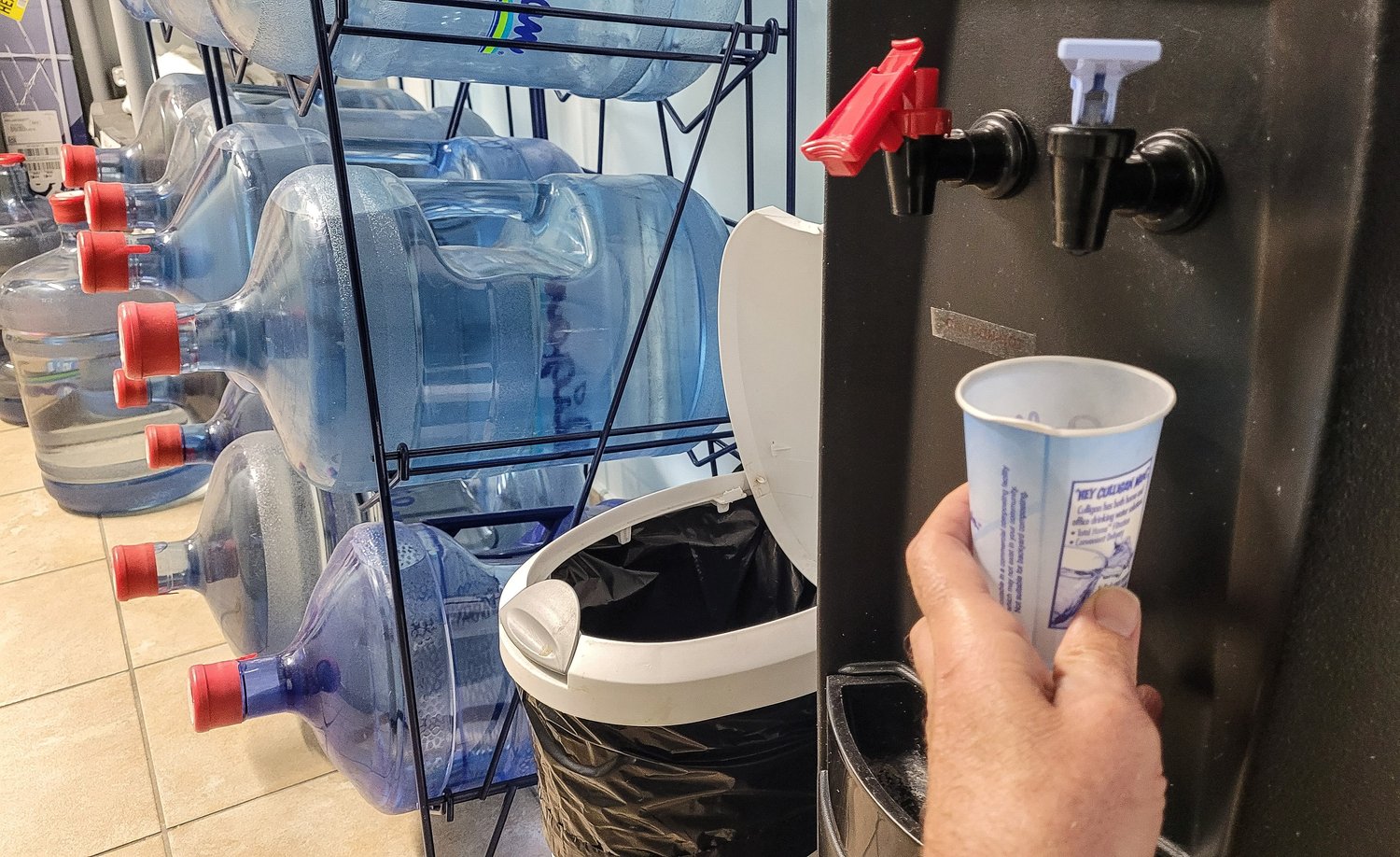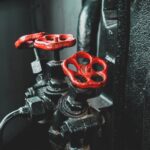Maintaining your water softener in peak condition requires vigilance against two common but often overlooked issues: salt bridges and flow problems within the brine tank. These issues can significantly impede the efficiency of your water softening system, leading to hard water woes despite having the right equipment installed at home. Understanding these challenges can make the difference between a smoothly running system and constant troubleshooting.
- Discover how salt bridge formation occurs and impacts your water softener’s flow dynamics.
- Identify the subtle yet telltale signs of a salt bridge inhibiting your brine tank’s efficiency.
- Explore practical solutions to dissolve salt bridges and enhance water flow.
- Learn maintenance tips that extend the lifespan of your water softener, preventing future issues.
By diving into these insights, you’ll equip yourself with the know-how to optimize your water softener’s performance. Delve deeper into the article to learn how to effectively combat these common problems and ensure your system functions reliably for years to come.
Understanding Water Softener Brine Tank Problems: Salt Bridge and Flow Dynamics
Water softeners are essential for households relying on hard water, transforming it into a usable form. However, brine tank problems, such as salt bridge formation and flow obstruction, can disrupt this process.
Understanding how a salt bridge forms is crucial. It occurs when a hard crust of salt develops at the top of the tank, creating an empty space underneath. This phenomenon often results from high humidity or using impure salt, impeding the salt’s ability to dissolve properly in water.
Flow dynamics can also be compromised due to other accumulations in the tank, like salt sludge at the bottom. This issue can restrict the brine solution’s flow necessary for regenerating the softener’s ion exchange resin.
Assessing these problems involves focusing on environmental conditions and the choice of salt. Regular checks help in preventing severe obstructions. By maintaining optimal salt dissolving conditions, you ensure the efficiency of your water softener system.
Identifying a Salt Bridge in Your Water Softener
Recognizing a salt bridge early is key to maintaining the system’s efficacy. To identify a salt bridge, gently probe the surface of the salt in the brine tank with a broom handle or similar item. If the handle doesn’t penetrate, you might be dealing with a salt crust.
An abrupt decline in water quality often signals a salt bridge, as it prevents the necessary salt from dissolving into the brine solution. Consequently, the softened water supply reduces, affecting household appliances and plumbing systems.
Additionally, regularly check for loose salt granules at the base of your brine tank. If there is no such accumulation despite regular usage, a salt bridge might be obstructing dissolution. Immediate action can prevent further harm to your water softener’s efficiency and longevity.
Preventing and Resolving Water Softener Brine Tank Problems: Effective Salt Bridge and Flow Solutions
Ensuring your water softener functions optimally requires addressing common issues like salt bridge formation and flow obstructions. These problems can significantly impact water flow and overall softener efficiency if left unchecked.
Salt Bridge Prevention: One of the most effective ways to prevent salt bridges is to monitor the salt level in your brine tank. Refill the tank before it drops below one-fourth full, but avoid overfilling to prevent compaction.
Crushing hardened salt can make it easier for the water to penetrate and dissolve the salt, mitigating bridge formation. Breaking up large salt pieces manually can also help maintain consistent water softening.
Ensuring Optimal Flow: Regularly inspect your water softener system for signs of blockages or reduced water flow. Check the brine tank’s inlet and outlet for any debris or salt buildup.
Cleaning the venturi valve and the nozzle can also enhance flow. These components play a critical role in drawing brine into the softener, ensuring that the water is effectively softened.
Consider integrating a maintenance schedule involving the use of resin cleaners, which can remove deposits from the softener and enhance water flow.
Maintaining Your Water Softener for Longevity
Regular maintenance is key to extending the lifespan of your water softener and avoiding costly repairs or replacements.
Check Salt Levels: Routinely verify the salt level in the brine tank. Keep the salt level above the water line to maintain effective ion exchange processes.
Cleansing the Brine Tank: Schedule periodic cleanings of the brine tank to eliminate any residue or sediment accumulation. This helps maintain a clear path for brine flow and enhances system performance.
Invest in high-quality salt pellets designed to minimize the accumulation of residue and impurities. These are specifically engineered to dissolve efficiently and reduce buildup.
Monitoring Regeneration Cycles: Ensure that regeneration cycles occur as required, typically every few days, depending on your water softener model. This process refreshes the resin beads and ensures continued water softening efficiency.
By adhering to these best practices, you can minimize the risk of future issues and ensure your water softener operates effectively for years to come.
Troubleshooting Persistent Water Softener Brine Tank Problems: Advanced Salt Bridge and Flow Solutions
Even with regular maintenance, some water softener brine tank problems may persist, requiring advanced troubleshooting techniques to address these challenges effectively. Persistent salt bridge formation and flow dynamics issues often demand a deeper understanding of the system and sometimes even professional intervention.
When faced with recurring salt bridge problems, it is crucial to first ensure that all routine maintenance tasks have been thoroughly and consistently performed. If your water softener brine tank continues to encounter difficulties, it may indicate underlying issues such as incorrect settings within the control valve or faulty components that need replacement.
One advanced solution for solving stubborn brine tank issues is to review the resin bed performance of your water softener. Over time, resin beads may become fouled with iron, mica, or other particles that inhibit proper functioning and contribute to flow problems. Consider consulting a professional to evaluate the condition of your resin bed and suggest replacement if necessary.
Another step involves assessing the efficiency of the brine injector. This crucial part of the softener can become clogged, impeding the regeneration process. Proper cleaning or replacement of the nozzle and venturi is recommended to ensure they are functioning as intended.
For water softeners that continue to have flow issues despite these interventions, in-depth inspection of the brine line connections and seals can uncover leaks or cracks that may not be immediately visible. Tightening or replacing affected parts can restore efficiency and resolve lingering problems.
Finally, it may be worth considering the installation of auxiliary equipment like a pre-filter system to reduce impurities and sediment that contribute to brine tank complications. A sediment filter not only extends the life of the system but also improves overall performance.
If attempts to solve these issues do not yield results, enlisting the help of a qualified technician with expertise in advanced water softener repairs is advisable. A professional can offer insights and solutions that ensure the longevity and efficiency of your system.
Frequently Asked Questions About Water Softener Brine Tank Issues
What is a salt bridge in a water softener?
A salt bridge is a hard crust that forms in your brine tank, preventing salt from dissolving in water.
How do I know if my brine tank has a salt bridge?
Test by pushing a broom handle into the salt. If it breaks through a solid layer, you have a salt bridge.
How can I break a salt bridge in my water softener?
Use a broom handle to gently break the salt crust to allow salt to dissolve properly.
What causes flow issues in a water softener brine tank?
Flow issues are often due to salt bridges or blockages in the drain line or brine tube.
Are there ways to prevent salt bridges from forming?
Maintain proper humidity levels and avoid overfilling the tank to minimize bridge formation.
Why is regular maintenance important for water softeners?
Regular maintenance ensures optimal performance and extends the lifespan of your water softener.
When should I seek professional help for my brine tank?
If issues are persistent or advanced techniques are needed, contact a professional electrician.





